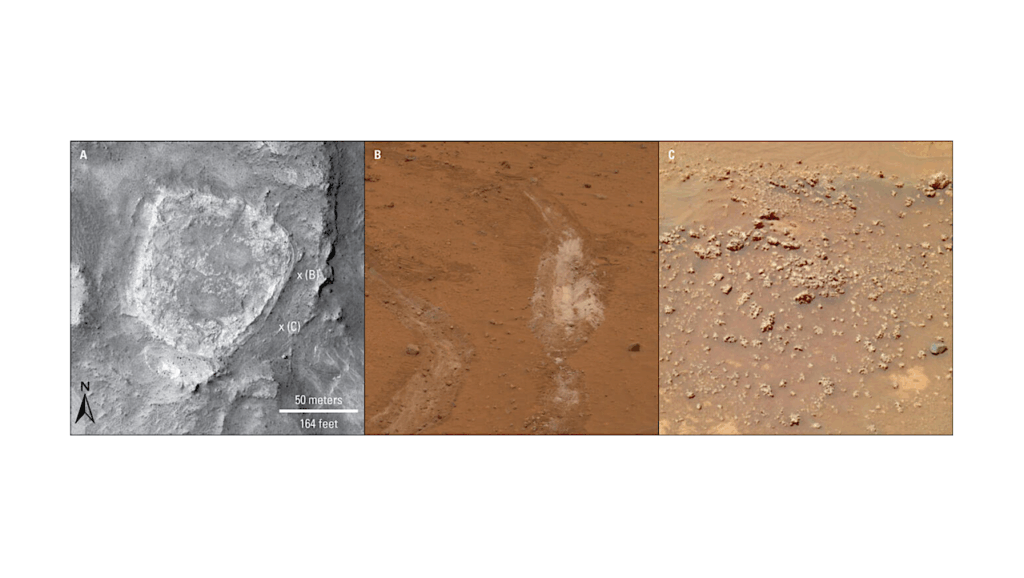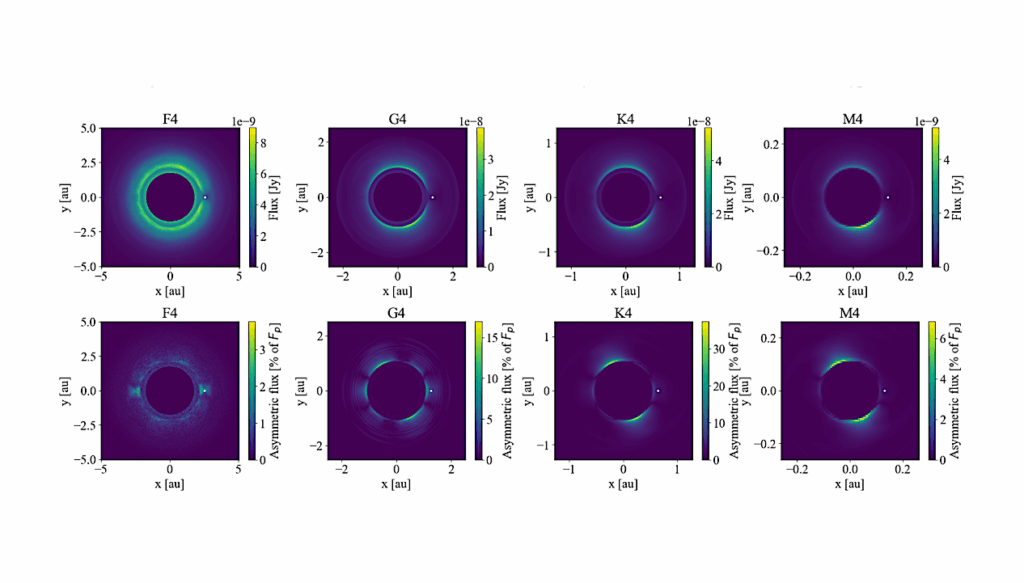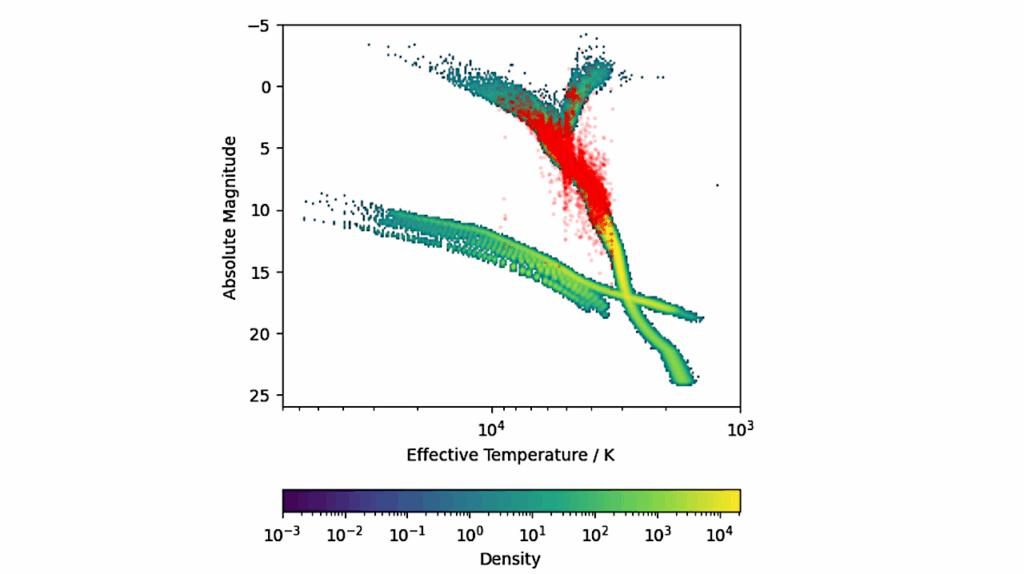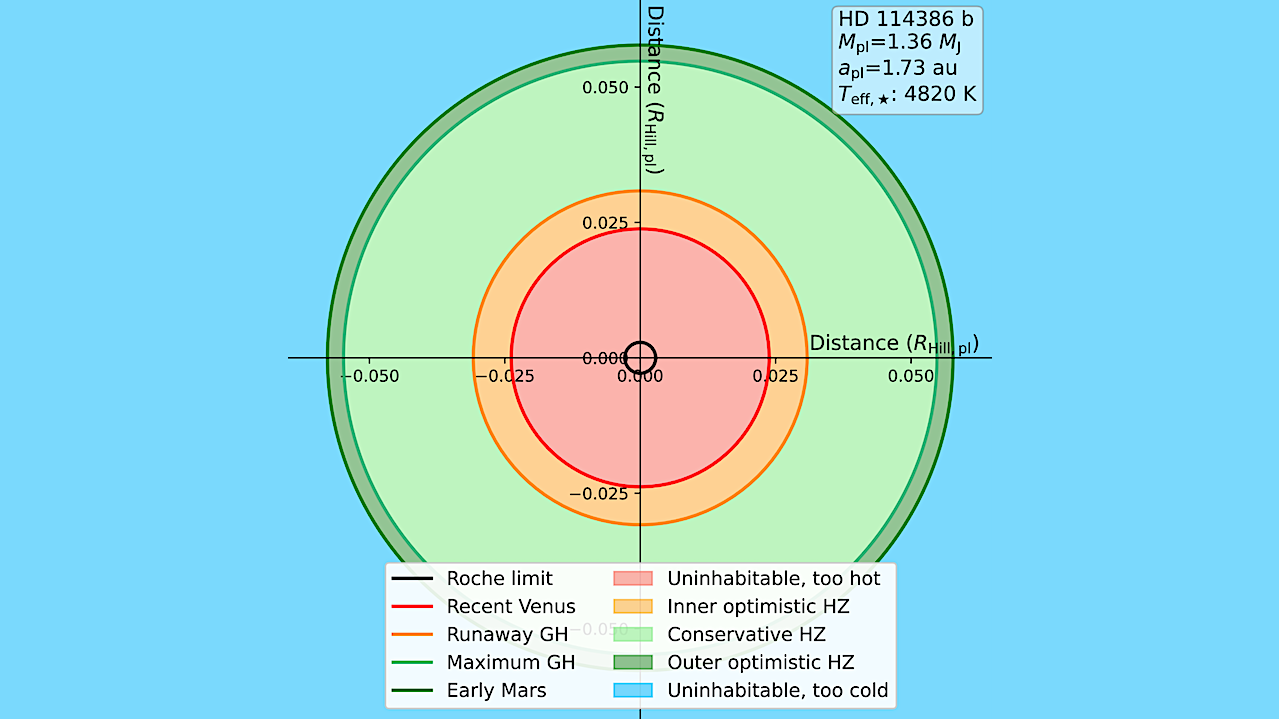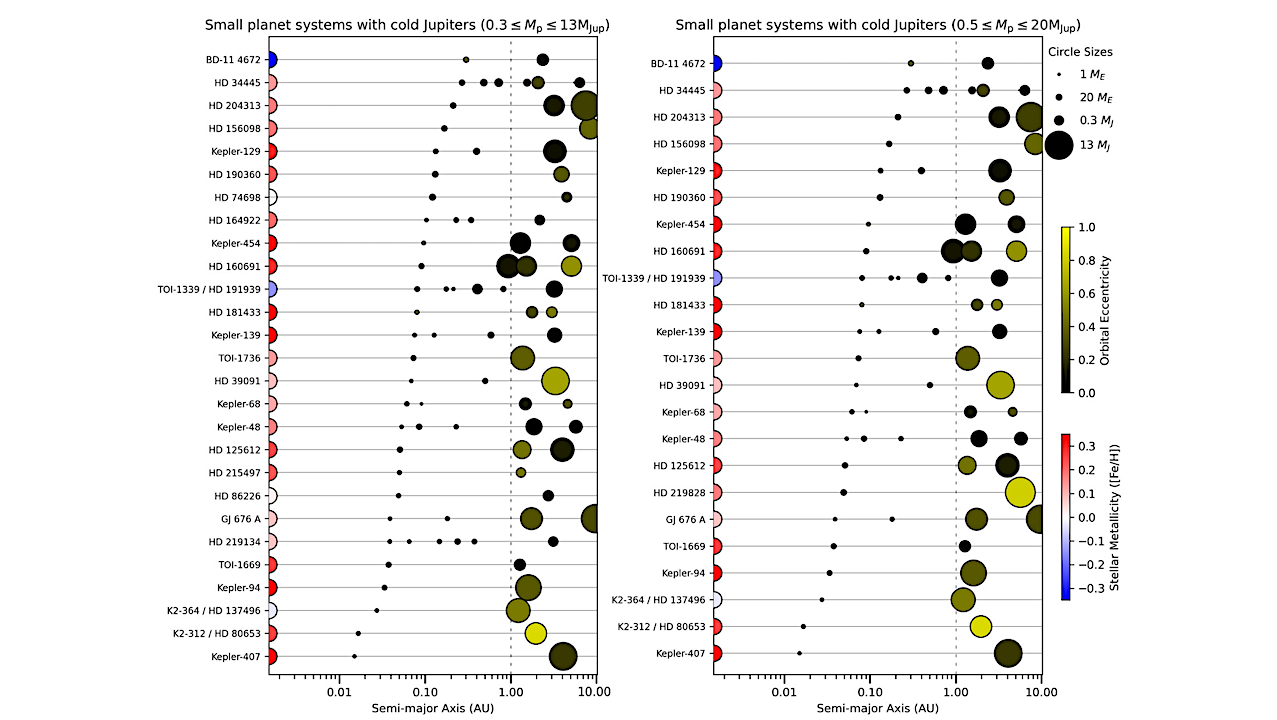Now Reading: Cloud and Haze Parameterization in Atmospheric Retrievals: Insights from Titan’s Cassini Data and JWST Observations of Hot Jupiters
-
01
Cloud and Haze Parameterization in Atmospheric Retrievals: Insights from Titan’s Cassini Data and JWST Observations of Hot Jupiters
Cloud and Haze Parameterization in Atmospheric Retrievals: Insights from Titan’s Cassini Data and JWST Observations of Hot Jupiters
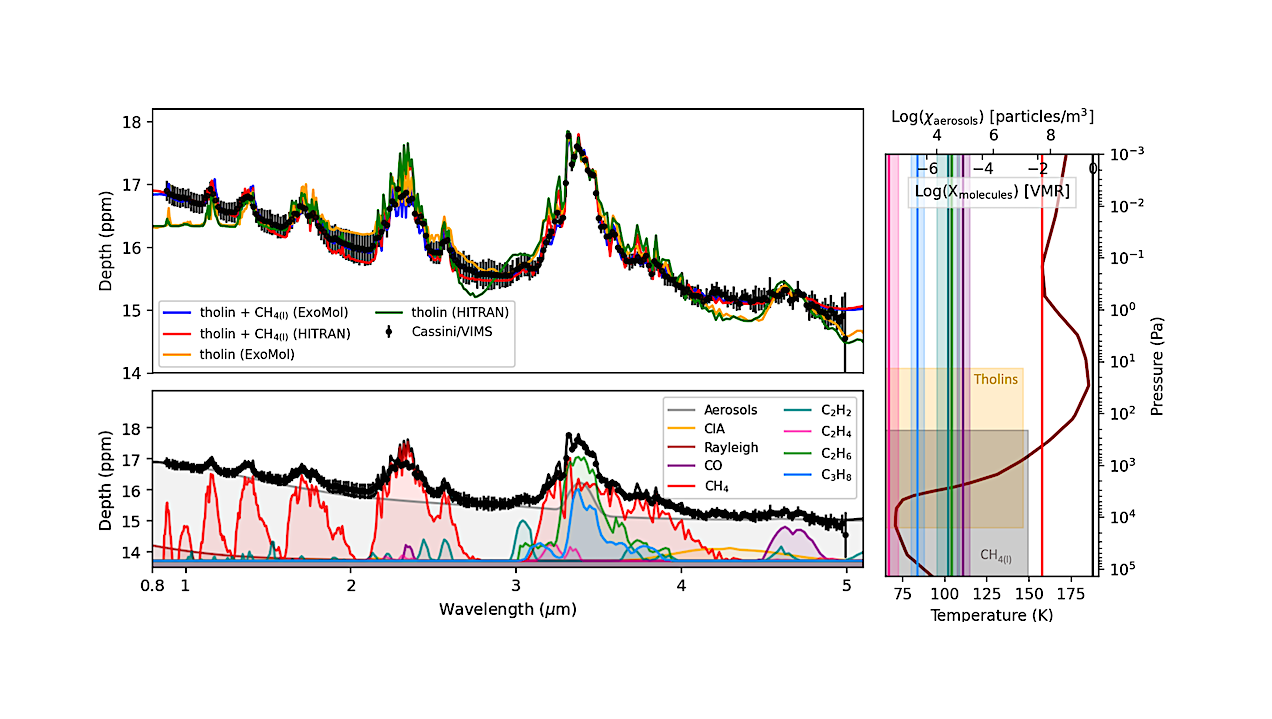

Retrievals of Cassini/VIMS occultation of Titan. Top left: observations and best-fit TauREx retrievals. Bottom left: breakdown of the extinction contributions in the tholin + CH4(l)(HITRAN) case. Right: Atmospheric properties inferred for the tholin + CH4(l) (HITRAN) case. The source for the opacity data (i.e, HITRAN or ExoMol) is important and can slightly change the best-fit spectrum and retrieval interpretation. Overall, the Cassini data is dominated by molecular absorption from CH4, CO, C2H6, C3H8 and extinction by hydrocarbon aerosols (tholins + CHCH4(l). The shape of the 3.4 µm absorption feature is likely best explained by the contribution of multiple species including some contribution from tholins. Overall, retrieval interpretations of Titan’s atmosphere are compatible with stratospheric inferences from previous works (see Figure B1). — astro-ph.EP
Context: Before JWST, telescope observations were not sensitive enough to constrain the nature of clouds in exo-atmospheres. Recent observations, however, have inferred cloud signatures as well as haze-enhanced scattering slopes motivating the need for modern inversion techniques and a deeper understanding of the JWST information content.
Aims: We aim to investigate the information content of JWST exoplanet spectra. We particularly focus on designing an inversion technique able to handle a wide range of cloud and hazes.
Methods: We build a flexible aerosol parameterization within the TauREx framework, enabling us to conduct atmospheric retrievals of planetary atmospheres. The method is evaluated on available Cassini occultations of Titan. We then use the model to interpret the recent JWST data for the prototypical hot Jupiters HAT-P-18 b, WASP-39 b, WASP-96 b, and WASP-107 b. In parallel, we perform complementary simulations on controlled scenarios to further understand the information content of JWST data and provide parameterization guidelines.
Results: Our results use free and kinetic chemistry retrievals to extract the main atmospheric properties of key JWST exoplanets, including their molecular abundances, thermal structures, and aerosol properties. In our investigations, we show the need for a wide wavelength coverage to robustly characterize clouds and hazes-which is necessary to mitigate biases arising from our lack of priors on their composition-and break degeneracies with atmospheric chemical composition.
With JWST, the characterization of clouds and hazes might be difficult due to the lack of simultaneous wavelength coverage from visible to mid-infrared by a single instruments and the likely presence of temporal variability between visits (from e.g., observing conditions, instrument systematics, stellar host variability, or planetary weather).
Quentin Changeat, Deborah Bardet, Katy Chubb, Achrene Dyrek, Billy Edwards, Kazumasa Ohno, Olivia Venot
Quentin Changeat, Deborah Bardet, Katy Chubb, Achrene Dyrek, Billy Edwards, Kazumasa Ohno, Olivia Venot
Comments: Accepted in A&A. 29 pages, 15 figures
Subjects: Earth and Planetary Astrophysics (astro-ph.EP); Instrumentation and Methods for Astrophysics (astro-ph.IM)
Cite as: arXiv:2505.18715 [astro-ph.EP] (or arXiv:2505.18715v1 [astro-ph.EP] for this version)
https://doi.org/10.48550/arXiv.2505.18715
Focus to learn more
Submission history
From: Quentin Changeat
[v1] Sat, 24 May 2025 14:29:54 UTC (46,767 KB)
https://arxiv.org/abs/2505.18715
Astrobiology, Astrochemistry,
Stay Informed With the Latest & Most Important News
Previous Post
Next Post
-
 012024 in Review: Highlights from NASA in Silicon Valley
012024 in Review: Highlights from NASA in Silicon Valley -
 02Panasonic Leica Summilux DG 15mm f/1.7 ASPH review
02Panasonic Leica Summilux DG 15mm f/1.7 ASPH review -
 03How New NASA, India Earth Satellite NISAR Will See Earth
03How New NASA, India Earth Satellite NISAR Will See Earth -
 04And Thus Begins A New Year For Life On Earth
04And Thus Begins A New Year For Life On Earth -
 05Astronomy Activation Ambassadors: A New Era
05Astronomy Activation Ambassadors: A New Era -
06SpaceX launch surge helps set new global launch record in 2024
-
 07Space Force plans new ‘Futures Command’ amid pressure to speed up modernization
07Space Force plans new ‘Futures Command’ amid pressure to speed up modernization












